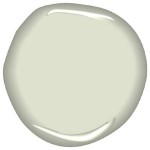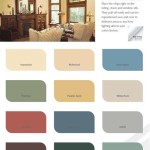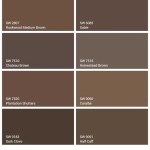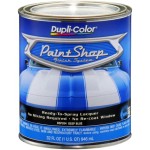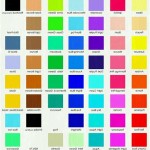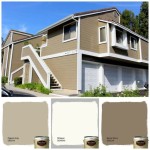Dark Teal Paint Color: An Elegant and Mysterious Choice
Dark teal paint, a sophisticated blend of blue and green with a deep, almost shadowy undertone, presents an intriguing option for interior and exterior design. This color evokes a sense of elegance, mystery, and depth, making it a compelling choice for those seeking a distinctive aesthetic. Its versatility allows it to be incorporated into various design styles, from modern minimalist to classic traditional, adding a touch of drama and refinement.
The inherent complexity of dark teal stems from its composite nature. The presence of blue provides a calming and stable effect, reminiscent of the ocean depths or a twilight sky. Conversely, the green component introduces a sense of nature, growth, and tranquility. This nuanced combination, coupled with the 'dark' element, contributes to the color's richness and ability to create a strong visual impact. The precise proportions of blue and green within a specific dark teal paint formulation will significantly influence its overall character, ranging from cooler, more blue-leaning shades to warmer, greener variations. This subtle variability allows for careful selection to suit individual preferences and the specific requirements of a project.
Dark teal is not a neutral color in the strictest sense, yet it possesses a remarkable capacity to serve as a backdrop for a wide array of other colors and materials. It pairs exceptionally well with metallic accents such as gold, brass, and copper, enhancing its luxurious feel. Contrasting colors like coral, mustard yellow, or even a bright white can create striking focal points against a dark teal background. Furthermore, natural materials like wood, stone, and leather complement the color's organic undertones, creating a harmonious and balanced environment.
Advantages of Using Dark Teal in Interior Design
The application of dark teal paint in interior spaces offers a number of distinct advantages. Firstly, it effectively creates a sense of depth and dimension, particularly in smaller rooms. By absorbing light rather than reflecting it, dark teal walls can make a space feel larger and more enveloping. This effect is amplified when combined with strategic lighting, highlighting specific areas and creating visual interest. Secondly, dark teal introduces a layer of sophistication and elegance. Its inherent richness elevates the overall aesthetic of a room, transforming ordinary spaces into refined retreats. This makes it particularly suitable for formal living rooms, dining rooms, and bedrooms where a sense of luxury is desired. Thirdly, dark teal is a versatile color that can be adapted to different design styles. It can serve as a grounding neutral in a minimalist setting or as a bold statement color in a more eclectic design scheme. This adaptability allows designers to seamlessly incorporate dark teal into a variety of projects, accommodating diverse aesthetic preferences.
Beyond aesthetics, dark teal can also contribute to the overall ambiance of a space. Its calming blue undertones promote relaxation and tranquility, making it an ideal choice for bedrooms and bathrooms. The green component introduces a sense of connection to nature, fostering a feeling of well-being and harmony. By carefully considering the psychological impact of color, designers can leverage dark teal to create environments that are both visually appealing and emotionally supportive.
However, it is important to acknowledge the potential drawbacks of using dark teal. Due to its light-absorbing properties, it may not be suitable for rooms with limited natural light. In such cases, careful consideration must be given to artificial lighting solutions to prevent the space from feeling too dark or oppressive. Furthermore, the intensity of dark teal can be overwhelming if used excessively. It is generally advisable to use it as an accent color or on a single feature wall, rather than painting an entire room in this hue. Balancing dark teal with lighter colors and natural materials is crucial to create a harmonious and balanced interior.
Applications of Dark Teal in Various Rooms
The versatility of dark teal extends to its application in various rooms throughout a house. In living rooms, it can be used to create a dramatic backdrop for a fireplace or a statement furniture piece. A dark teal accent wall can add depth and visual interest to the space, while lighter-colored furniture and accessories can provide a contrasting balance. In dining rooms, dark teal can create a sophisticated and intimate atmosphere, perfect for formal dinners or cozy gatherings. Pairing it with metallic accents and elegant lighting fixtures can further enhance its luxurious feel. In bedrooms, dark teal can promote relaxation and tranquility, creating a serene and restful environment. Using it on the walls or as an accent color in bedding and accessories can add a touch of elegance and sophistication.
Bathrooms can also benefit from the use of dark teal, transforming ordinary spaces into spa-like retreats. It can be used on the walls, cabinetry, or even as a tile color, creating a sense of depth and luxury. Pairing it with white fixtures and metallic accents can create a clean and sophisticated look. In kitchens, dark teal can be used to add a touch of drama and sophistication to cabinetry or backsplashes. Combining it with lighter-colored countertops and stainless steel appliances can create a modern and stylish kitchen design. Even in hallways and entryways, dark teal can make a bold statement, creating a memorable first impression. Using it on the walls or as an accent color in artwork and accessories can add a touch of elegance and sophistication to these transitional spaces.
When considering the application of dark teal, it is essential to take into account the existing architectural features of the room. High ceilings and large windows can accommodate darker shades more effectively, while smaller rooms with limited natural light may require a more strategic approach. It is also important to consider the overall style of the house and the existing color palette. Dark teal should complement the existing design elements, creating a cohesive and harmonious aesthetic.
Pairing Dark Teal with Other Colors and Materials
The success of incorporating dark teal into a design scheme hinges significantly on the careful selection of complementary colors and materials. As previously mentioned, metallic accents such as gold, brass, and copper enhance its luxurious feel and add a touch of glamour. These warm metals provide a striking contrast against the cool tones of dark teal, creating a visually appealing and elegant effect. Lighter shades of teal, such as aqua or turquoise, can be used to create a monochromatic color scheme, adding depth and dimension to the space while maintaining a cohesive aesthetic. Neutral colors like white, cream, and beige provide a calming and grounding effect, allowing the dark teal to stand out as a focal point. These neutrals create a balanced and harmonious environment, preventing the dark teal from overwhelming the space.
For a more vibrant and energetic look, consider pairing dark teal with contrasting colors like coral, mustard yellow, or orange. These bold colors create a striking visual impact, adding a touch of personality and playfulness to the design. However, it is important to use these contrasting colors sparingly to avoid creating a chaotic or overwhelming effect. Natural materials like wood, stone, and leather complement dark teal's organic undertones, creating a warm and inviting atmosphere. These materials add texture and depth to the design, enhancing its overall appeal. Plants and greenery also work well with dark teal, bringing a touch of nature indoors and creating a sense of freshness and vitality.
The specific combination of colors and materials will depend on the desired aesthetic and the function of the space. For a formal and elegant setting, metallic accents, neutral colors, and luxurious fabrics like velvet and silk are appropriate choices. For a more casual and relaxed atmosphere, natural materials, lighter shades of teal, and comfortable fabrics like linen and cotton can be used. Experimenting with different combinations and carefully considering the overall effect is crucial to achieving a successful and harmonious design.
In summary, dark teal paint offers a compelling option for designers and homeowners seeking an elegant and mysterious aesthetic. Its versatility allows it to be incorporated into various design styles and adapted to different rooms throughout a house. By carefully considering the advantages and disadvantages of using dark teal and by thoughtfully selecting complementary colors and materials, it is possible to create stunning and captivating spaces that reflect individual style and personality.

Teal Paint Colours

38 Shades Of Teal Color Get Inspired By These Tones

17 Best Sherwin Williams Teal Paint Colors Trend 2024

Color Guide What Colors Match With Teal Homify

Best Living Room Colors The Top 8 Trending Tones In Designer Homes Decorilla Interior Design

55 Bold And Beautiful Blue Paint Colors That Designers Swear By

Choosing The Right Paint Color For Your Interior Alpha Omega Painting

Color Guide What Colors Match With Teal Homify

25 Of The Best Blue Paint Color Options For A Living Room

25 Of The Best Blue Paint Color Options For A Living Room
Related Posts

